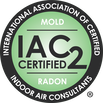Mike's Home Inspector BlogMichael Burfitt |
|
To my knowledge, there are no building code regulations in either Halifax or Nova Scotia that require homeowners to install rain gutters, or eavestroughs if you prefer. This is consistent with my observations: a significant number of homes I inspect do not have gutters, whether it be missing on just on one side, over a portico, other small areas, or completely absent. Of course, just because I see nothing in my research doesn’t mean that I don’t consider them an essential part of a house. As I have said many times before: moisture is the #1 enemy of homes! We here in Nova Scotia live in one of Canada’s wettest areas and that water needs to be kept away from homes: not only will this help minimize the chance of a flooded basement but will help to protect against paint being damaged and reduce the opportunity for mold and mildew to grow and wood rot to occur. As a systematic inspector, I know that it is useless to just install gutters and call it a day as they require proper downspouts to be effective. Otherwise, the water will eventually just spill out over the side, and we are back at square one. Furthermore, just pouring a bunch of water in one area near the foundation can do more harm than good: it needs to be extended as far as reasonably possible: 4 feet is a good minimum but that can vary depending on topography. Rain gutters, contrary to popular belief, are not supposed to be installed level. While they may look straight from the ground, it is required to have a gentle slope towards the downspout to prevent water from pooling. They also need to be regularly cleaned, especially in areas with taller trees. I did one inspection in a rural area where the gutter was nearly 100% clogged with foliage and was essentially useless: a regular eavestrough cleaning can also alert you to roofing issues, as when asphalt shingles begin to deteriorate granules can start to accumulate in the gutters. Furthermore, one needs to be aware of the slope of the property surrounding the structure. The simple fact is that without a properly graded lot, all the preventative measures in the world won’t do much good: the ground can only absorb so much water and with our rainy Spring season, water will travel towards a foundation and eventually inside a home if the lot is sloped that way. I did one inspection where the force of water coming off the roof compacted the ground and sloped the ground towards the foundation and while no flooding was detected, it is not a matter of if but when the basement ends up with unwanted water.
A chain is only as strong as its weakest link and a water control system needs to be properly installed and maintained regularly to be effective. Installing a fancy eavestrough system without considering all the points mentioned in this blog post is nothing but a significant waste of time and money. While this can be a DIY project (yours truly successfully installed a supplementary system at home) it is important to understand the science behind water flow and to follow manufacturer’s instructions. 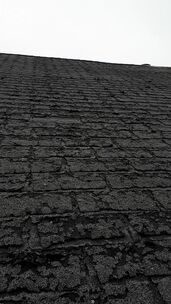 This is a perfect example of a roof covering that needs replacement. This is a perfect example of a roof covering that needs replacement. There are few things that I consider more important than providing outstanding home inspections: operating my business in a safe, legal, and ethical manner is one of them. I am extensively trained and experienced in working from heights thanks to my career in building operations and know how dangerous and difficult working at elevations can be. While there are some variables and subjectivity involved, such as snow or rain, there is no need to be subjective about what is considered a safe roof height to traverse: Nova Scotia’s laws prescribe the regulations involved in working from heights without a proper fall arrest system. Workplace Health and Safety Regulations - Occupational Health and Safety Act (Nova Scotia) You are welcome to try and read the entire set of regulations without falling asleep but all you need to know is that you can only work up to 10' (3m) from a safe surface without having a fall arrest system. While such residential fall arrest systems do exist, they are expensive and used almost exclusively by roofing companies. So, how do we inspect the roof if it cannot be traversed safely or legally? There are a number of alternatives. The easiest such way is to inspect from the eaves while remaining on the ladder. Often times I can easily inspect from the ladder as I have developed a sixth sense if the roof has an issue and know what to look for. This is my preferred method but is not always feasible, especially on very tall houses. The next alternative, while not my favourite, is to use a pair of binoculars to check the condition of the roof from the ground. UPDATE: As of 2022, I now have a drone (or helicopter as my son likes to call it) to provide a higher quality roof and gutter inspection when it isn't possible to traverse the roof. I did one inspection where there was no way to either reach the roof or see it from the ground. To accomplish this inspection, I got as high as I could and used a pole to attach my camera. The picture I took clearly shows the roof was well past its life expectancy and needed immediate attention. There are also some roofs that cannot be safely stepped on by home inspectors no matter how close they are to the ground. Two such examples are roofs with a metal covering and steep roofs of any kind. I also inspect roofs from the underside by entering the attic space. This is the only way to determine if there are any active roof leaks or evidence of any past leaks: there are a number of indications such as an anomaly on my thermal imager, compressed insulation, organic growth and of course visibly dripping water. This blog makes it clear how passionate I am about sharing my knowledge of home inspections and how much I go the extra mile for my clients but never at the expense of anyone’s safety. If I ever get the temptation to skirt the law or do something I know is unsafe I just remind myself of the person who has to tell my toddler that his Daddy considered getting a slightly better view of a roof as more important than coming home safely at the end of the day. Isn’t it ironic how we have gone from a handful of TV channels as a child growing up in the 80s to over a thousand today yet there seems to be even less to watch? Occasionally I flip through the channels (no pun intended) and see one of the too-many-to-name home renovation shows. The main premise is that the host finds a house with many problems and spends about a half hour overcoming unexpected issues before revealing a beautiful, remodeled home to the cameras.
There is no shortage of houses that are bought with the sole purpose of being renovated and sold quickly, usually within a few months. The common term for this type of property is a flipped house and those who buy these types of homes are known as flippers. Ask any home inspector their opinion of flipped houses is, and I doubt there will be many positive stories. The term “lipstick on a pig” is one I hear other inspectors throw around regularly and I can’t say I disagree with it. The main concern most home inspectors have is that flippers in general have a financial incentive to cut corners, especially in our current seller’s market conditions. There is a saying you might have heard that says “kitchens and bathrooms sell homes”. What this means is that important areas such as plumbing, electrical, roofing, etc. are usually not given as much priority as they should. I compare this to a refurbished car: sure, a new paint job, a reupholstered interior and shiny rims are great, but it is far more important to replace the engine, tires and transmission. Another concern is that many amateur house flippers, while well intended, simply do not understand the large scope of a home renovation and how difficult, complicated, and expensive a task like this is. This is made far worse by the construction boom we are experiencing, where many skilled trades are booked well in advance on one of the many high rise apartment buildings under construction in the Halifax area. When I was working in home improvement retail in the early 2000s one of the saddest things we saw regularly was distressed DIYers who got in way over their heads and ended up needing to have professionals re-do much of the home improvement work at significant cost and inconvenience. That isn’t to say that all home flippers are bad or are well-meaning-but-ignorant: there are many quality home flippers who care about providing a great home and a flipped house can be a great way to get a like new, turnkey house in an established neighbourhood. Often it can be difficult to tell whether a home rehab was comprehensive or just done on a surface level and for these reasons and more it is important to always have a flipped house inspected prior to purchase. Home inspectors have the training and experience needed to look past shiny cabinets or granite countertops and towards what is ultimately most important in maintaining an affordable, safe, and healthy home. Hopefully with the help of a home inspector your flip doesn’t become a flop. While I pride myself on being incredibly thorough in my inspections, the simple fact is that we home inspectors simply do not have the time to document every single issue within a home: as much as I am proud of being meticulous, I know it is important to maximize my time by focusing more effort on the big issues that greatly impact safety, efficiency and/or have a significant financial impact. Here are some examples of where I focus my attention:
Roof I recently did an inspection where the roof was not visible from ground level and was approximately 20 feet off the ground. It was a struggle to get a good look at it, but I am glad I took the time to do that. To put it nicely the roof was in very bad shape and needing a roofing contractor to evaluate it and replace the shingles as soon as possible. Not only are roof jobs expensive but contractors are usually booked well in advance and even small leaks can cause significant damage. Electrical I have previously touched on this in a past blog post: not only is a home’s electrical system very important from a safety point of view (electricity kills and electrical fires are far too common) but also from a functional point of view. Due to skyrocketing housing costs the average size of a household is growing along with their electrical needs. For example, a system designed for 2-3 people can encounter significant issues and require expensive upgrades to accommodate a household of 6. I also see a concerning lack of smoke and Carbon Monoxide (CO) detectors. Foundation While foundation cracks are very common and usually a result of simple settling (ALL buildings settle), some cracks can be symptoms of major structural problems that can cost well into the 5 figures to correct. Fortunately, while catastrophic problems are rare it goes without saying it is not something I want to miss. HVAC (Heating, Ventilation & Air Conditioning) There is no easy answer for what the best HVAC system is as every option has its pros and cons: in my home I have successfully replaced most of our electric baseboard heaters with a ductless mini split system, but this may not work for you. One area of concern for me is the large number of older systems still in use: while they can last for years to come, they could potentially fail at any time and do not take advantage of modern energy efficiency. Another thing to consider is that many homes in Nova Scotia do NOT have mechanical cooling. Given the recent hot and humid summers this is definitely something home buyers, especially those shopping outside of July and August should be aware of. Drains I can’t tell you how many homes I have inspected that are missing floor drains, particularly near washers located on the top level of a home. When we moved into our home, the water tank burst before we could arrange a replacement and we woke up to a flooded basement on day three as the drain was covered by rigid insulation (and that's another blog post!) and I did not yet get a chance to correct it. It can be difficult to add proper drains but at least a home buyer can be aware of the potential issues from a washing machine or water tank. This list is by no means exhaustive but merely a sample of what is important to be focused on during an inspection. I am not as concerned about finding the $100 issues as I am the $10,000 issues and how to identify a potential money pit or an unsafe home. One of the most interesting aspects of a home inspection is going into the attic space. This is an area where few homeowners venture and provides plenty of valuable information as to the condition of the home. One such important detail is ventilation. Do unfinished attics where nobody spends any time in really need ventilation? Yes!
There are several reasons why poor ventilation needs to be corrected:
While it is important for a roof to have adequate ventilation, it should also be noted that too much ventilation can introduce too much moisture and can also lead to premature roof failure. A roofing contractor can offer recommendations to the appropriate level of ventilation. Fortunately, attic spaces generally don’t need a lot of regular maintenance, but they should be checked at least a couple of times a year. One of the biggest issues I see are rafter baffles that have been knocked out of place by high winds. They are pictured in the diagram below and keep the soffit vent free of insulation. How do you know if you have ventilation problems? Of course, you can always contact your friendly neighbourhood home inspector at Inside Edge Home Inspections for help but here are a few clues that it may be time for further investigation.
There are many types of attic ventilation, but the most common type is a combination of soffit and ridge (roof peak) vents and has been very popular since the 1980s. There are other options that a roofing contractor can discuss should you have any concerns about inadequate insulation. One of the questions frequently posed to home inspectors is if a home can fail an inspection and if so, how often do homes fail? The simple answer to that is no: we are independent consultants, not municipal code compliance officers and do not condemn homes. Every client has different expectations and what their tipping point is and will have to make that decision for themselves and as home inspectors we provide the necessary knowledge and facts. Yes, there are a number of issues that are very serious and difficult if not impossible to remedy at a reasonable cost but luckily, they are rare in my experience. One of the ways I accomplish my goal of providing detailed information and organize my reports in a way that is easy to understand is to provide an action list at the end of each report. I then organize tasks based on what I consider the priority level: every inspector is different, but I personally break down my recommendations into four basic categories: In reality, while these specific examples look easy to categorize in many cases a great deal of judgement is used in making proper recommendations. One such example is a cracked foundation: a crack can be a sign of anything from a cosmetic nuisance right up to a symptom of complete structural failure. Luckily the overwhelming majority of cracks are minor but as a home inspector we can advise whether the services of a structural engineer or other specialist should be sought.
As a volunteer first responder, possibly the most important skill other than immediate life-saving actions is to not only report and observe but also to understand when an issue needs further attention and if so, what form it should take: many issues look serious on the surface but are relatively minor while others are only serious to the trained eye and need immediate attention. Developing this skill has served me well as a home inspector too, where I am able to put issues in the proper context, not overreacting or underreacting to what I see. Home inspector's reports do not have a grade and there is no such thing as pass or fail but there are issues with various degrees of seriousness in each and every home. This is why I promote and recommend regular maintenance inspections: we can help you avoid surprises and to plan and budget for preventative maintenance on your terms. |
Archives
April 2024
Categories
All
|
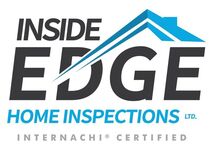
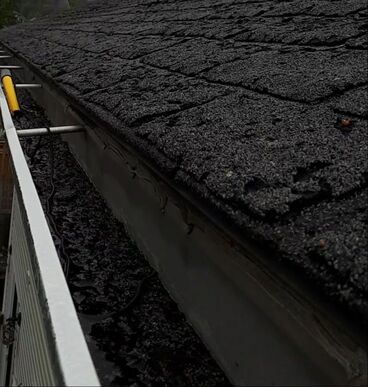
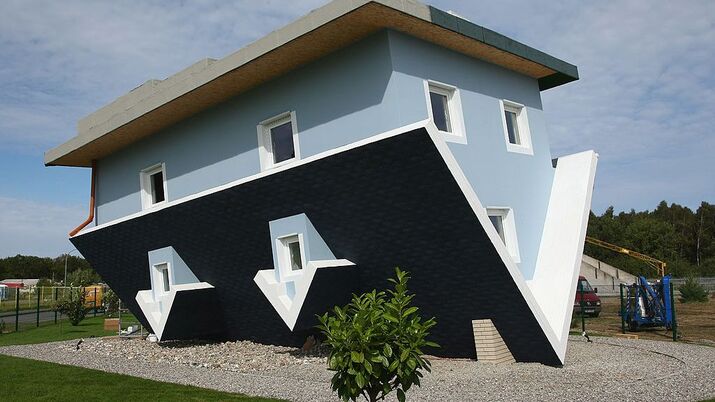
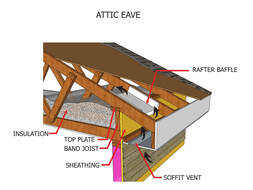

 RSS Feed
RSS Feed

